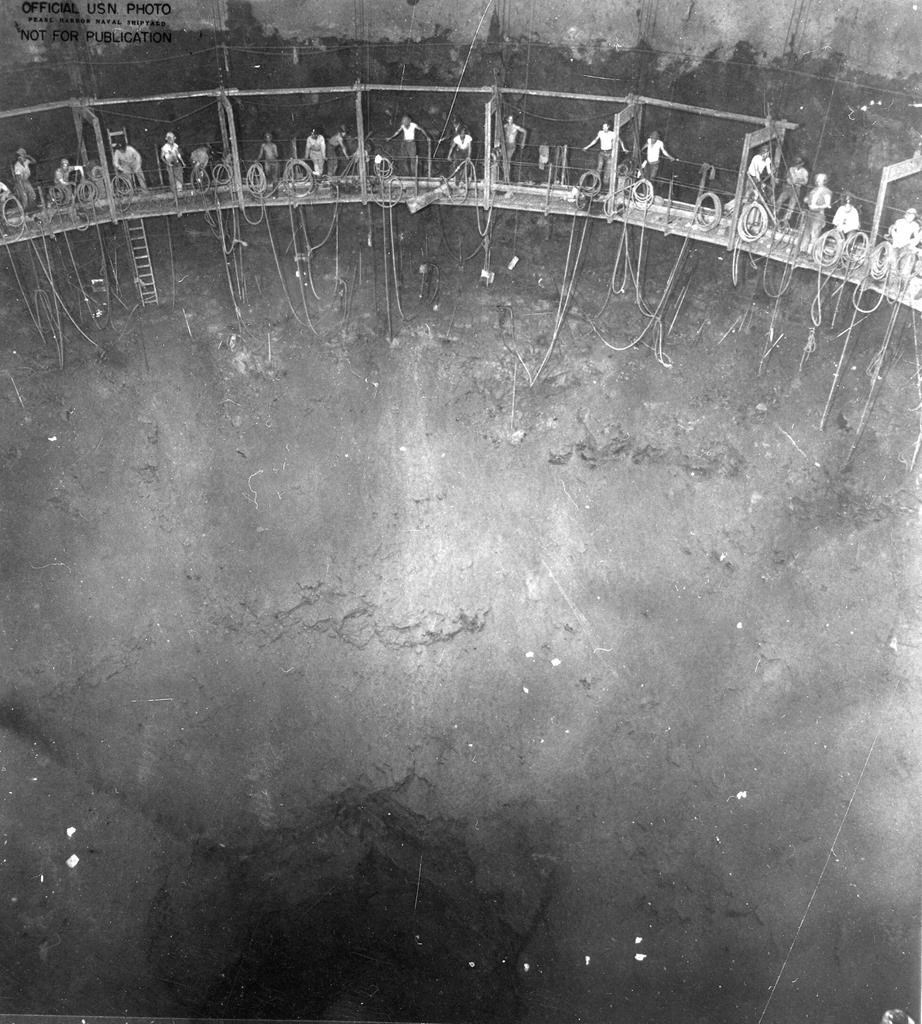JOINT BASE PEARL HARBOR-HICKAM, Hawaii (AP) — The U.S. military said Monday it's ready to begin draining 1 million gallons (3.79 million liters) of fuel from three pipelines as part of an initial step toward closing a World War II-era fuel storage facility that leaked petroleum into Pearl Harbor's tap water last year.
The pipelines run about 3 miles (4.83 kilometers) from the Red Hill Bulk Fuel Storage Facility in the mountains above Pearl Harbor down to the military base.
Starting Tuesday, the military will spend six days draining the pipelines one by one. Fuel is expected to move through the pipes for a total of 12 hours during the six days.
The fuel has been sitting in the pipes since the military suspended use of the Red Hill facility last year after it leaked petroleum into a drinking water well serving 93,000 people in and around Joint Base Pearl Harbor-Hickam.
Nearly 6,000 people, mostly military personnel and their families, sought medical attention for rashes, sores, nausea and other ailments after drinking and bathing with the contaminated water.
Shortly after, the state Department of Health ordered the military to drain fuel from Red Hill and shut the facility down. The military says 104 million gallons remain in the tanks themselves. It aims to remove this fuel by July 2024 after it makes necessary repairs to be able to drain the tanks safely.
Navy Rear Adm. John Wade, the commander of Joint Task Force Red Hill, said the state Department of Health and the U.S. Environmental Protection Agency reviewed and approved the military's plan to drain the pipelines. A third-party contractor also checked the plans, he said.
The most dangerous aspect of draining the pipelines is the potential for fuel to spill and enter the aquifer, Wade told reporters as a news conference.
“So everything that we’ve done, every focus of effort for the planning and the rehearsals has been focused on mitigating any chance of a spill,” he said.
The Red Hill facility sits just 100 feet (30 meters) above one of Honolulu's most important drinking water aquifers.
Hawaii officials are concerned that last year's spill contaminated the aquifer and are worried that any future spills would also pollute the aquifer, which normally supplies more than 20% of the water consumed in Honolulu.
Wade said representatives from the Department of Health and the EPA will be on hand while military drains the pipelines.
Task force members trained individually and as groups on how to respond if fuel spills while the pipelines are being drained, he said.
A Navy investigation found a series of mistakes over the course of six months caused last year's spill.
It found operator error caused a pipe to rupture on May 6, 2021 when fuel was being transferred between tanks. This caused 21,000 gallons (80,000 liters) of fuel to spill. Most of it flowed into a fire suppression line and sat there for six months, causing the line to sag.
Then on Nov. 20, a cart rammed into the sagging line, releasing 20,000 gallons (75,700 liters) of fuel. A team thought they recovered all of this fuel, but they missed about 5,000 gallons (19,000 liters). Fuel they missed flowed into a French drain and from there into the drinking water well.
Fuel from the three pipelines will go to above-ground storage tanks and fuel barges which will then supply Air Force jets and Navy ships at the base, officials said.
Audrey Mcavoy, The Associated Press


